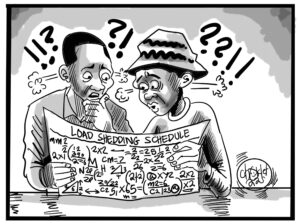A report by the Center for International Forest Research (CIFOR) on Mukula production and trade revealed that Zambia declared to have exported 3,000 m3 of Mukula logs valued at US$900,000 in 2016, while China declared Mukula imports from Zambia of about 61,000 m3 for an approximate value of US$ 87 million.
Simple arithmetic tells us that only five per cent of the Mukula logs exported to China were accounted for, while proceeds from 95 per cent went into private pockets. In other words, there was 20 times more Mukula exported to Asia than what our Zambian authorities declared. According to experts from CIFOR, this was only made possible through bribes paid to State officials, and we agree.
“High volumes of Mukula continue to be exported as logs despite regulations prohibiting it. Recent Mukula production in Zambia could have amounted to about 110,000 m3 per annum, with revenue losses of about US$3.2 million and bribes paid to state officials of about US$ 1.7 million. While official statistics remain incomplete and unclear, comparing Zambia and Chinese customs data reveals significant differences. We compared export statistics for logs and sawn wood as declared by Zambia to the Food and Agriculture Organization of the United Nations (FAO), with data from Chinese customs. what leaves Zambia as sawn wood seems to arrive in China as logs. It seems clear that Mukula, which is largely exported in logs, often gets declared as sawn wood at departure. In 2016, Zambia declared to have exported about 3,000 m3 for an approximate value of US$900,000, while China declared imports of about 61,000 m3 for an approximate value of US$87 million,” reads the CIFOR report.
Dear readers, no matter how weak a country’s customs unit and revenue authority can be, there is no way 95 per cent of a commodity can leave the country undetected. This can only be made possible through collusion among responsible government officials or by a directive from a very powerful office in the land.
It is embarrassing to our government officials that the Chinese who are being vilified for corruption kept their end of the Mukula movements clean by making genuine declarations to their State authorities, while the cartel in Zambia was conniving to manipulate documents and steal from itself. This is what happens when selfish leaders are in charge of a nation, they care less about anyone else but themselves.
We insist that it is impossible that the smuggling of Mukula could have been done without the involvement of senior government officials in Zambia using third parties and proxies. In fact, this is what the 2017 Financial Intelligence Centre (FIC) money laundering trends report revealed.
It stated that Zambia recorded K4.4 million in suspicious cash transactions linked to illicit trade in timber. The FIC went further to reveal that financial transactions amounting to K872 million linked to such illicit activities were done in personal bank accounts as opposed to business accounts, in order to evade tax.
“We noted an increase in the number of currency transaction reports involving timber sales and they were mostly performed by individuals in regions where the prohibited Mukula tree is being harvested. This raised suspicion of Mukula traders declaring their sales as proceeds from other types of timber as opposed to Mukula tree. During 2017, a total of K4,454,726 was reported as timber-related currency transactions. It was further observed that the deposits in the accounts of individuals involved in the timber trade were done by third parties, mostly of Asian and Zambian origin,” stated the FIC it its 2017 Money Laundering/Terrorist Financing Trends Report.
What more is left to tell about the smuggling of Mukula? Researchers have made their case; money laundering reports are out there for all who need proof; what government officials have said in the past in defence of their activities has also been brought to the fore.
With this at the back of the mind, the revelations in the recently released Environmental Investigation Agency (EIA) report must now make sense to discerning readers. We have spent this entire week helping to connect the dots for people to read between the lines and form their own opinion regarding the allegations contained in the EIA report.
Our opinion on the matter is simply that: If it looks like a duck, swims like a duck, and quacks like a duck, then it certainly is a duck.




















3 responses
Very insightful and well researched journalism
CORRUPTION. Why even ask.
Serious lack of integrity